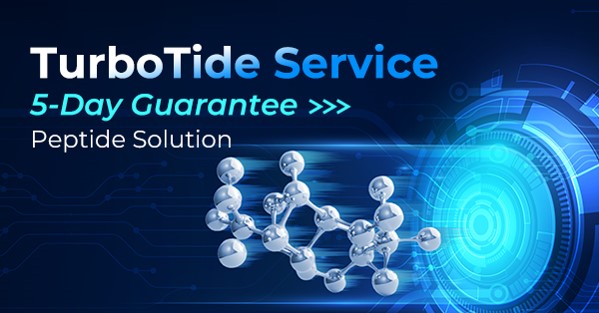-
REAGENT SERVICES
Hot!
-
Most Popular Services
-
Molecular Biology
-
Recombinant Antibody/Protein
-
Reagent Antibody
-
CRISPR Gene Editing
-
DNA Mutant Library
-
IVT RNA and LNP Formulations
-
Oligo Synthesis
-
Peptides
-
Cell Engineering
-
- CRISPR/Cas9 sgRNA
- CRISPR/Cas12a crRNA
- Prime Editing Guide RNA
- Base Editing Guide RNA
- HDR Templates
- gRNA + HDR Template Design Tools
- cGMP Guide RNA
- cGMP HDR Templates
- CRISPR/Cas Proteins
- CAR-T Knock-in Optimization Kit
- CRISPR Plasmids
- CRISPR gRNA Plasmid Libraries
- CRISPR Cell Lines
- Microbial Genome Editing
-
-
PRODUCTS
-
Most Popular Reagents
-
 Instruments
Instruments
-
Antibodies
-
ELISA Kits
-
Protein Electrophoresis and Blotting
-
Protein and Antibody Purification
-
Recombinant Proteins
-
Molecular Biology
-
Stable Cell Lines
-
Cell Isolation and Activation
-
 IVD Raw Materials
IVD Raw Materials
-
 Therapy Applications
Therapy Applications
-
Resources
-
- Pharmacokinetics and Immunogenecity ELISA Kits
- Viral Titration QC ELISA Kits
- -- Lentivirus Titer p24 ELISA KitHot!
- -- MuLV Titer p30 ELISA KitNew!
- -- AAV2 and AAVX Titer Capsid ELISA Kits
- Impurity Test ELISA Kits
- -- BSA ELISA Kit, 2G
- -- Cas9 ELISA KitNew!
- -- Protein A ELISA KitNew!
- -- His tagged protein detection & purification
- -- dsRNA ELISA Kit
- -- Endonuclease ELISA Kit
- COVID-19 Detection cPass™ Technology Kits
-
- Automated Maxi-Plasmid PurificationHot!
- Automated Mini-Plasmid PurificationNew!
- PCR Reagents
- S.marcescens Nuclease Benz-Neburase™
- DNA Assembly GenBuilder™
- Cas9 / Cas12a / Cas13a Nucleases
- Base and Prime Editing Nucleases
- GMP Cas9 Nucleases
- CRISPR sgRNA Synthesis
- HDR Knock-in Template
- CRISPR Gene Editing Kits and Antibodies
-
![AmMag™ Quatro Automated Plasmid Purification]() AmMag™ Quatro automated plasmid purification
AmMag™ Quatro automated plasmid purification
-
![Anti-Camelid VHH]() MonoRab™ Anti-VHH Antibodies
MonoRab™ Anti-VHH Antibodies
-
![ELISA Kits]() ELISA Kits
ELISA Kits
-
![Precast Gels]() SurePAGE™ Precast Gels
SurePAGE™ Precast Gels
-
![Quatro ProAb Automated Protein and Antibody Purification System]() AmMag™ Quatro ProAb Automated Protein and Antibody Purification System
AmMag™ Quatro ProAb Automated Protein and Antibody Purification System
-
![Target Proteins]() Target Proteins
Target Proteins
-
![AmMag™ Quatro Automated Plasmid Purification]() AmMag™ Quatro automated plasmid purification
AmMag™ Quatro automated plasmid purification
-
![Stable Cell Lines]() Stable Cell Lines
Stable Cell Lines
-
![Cell Isolation and Activation]() Cell Isolation and Activation
Cell Isolation and Activation
-
 IVD Raw Materials
IVD Raw Materials
-
![Quick
Order]() Quick Order
Quick Order
-
![Quick
Order]() Quick Order
Quick Order
- APPLICATIONS
- RESOURCES
- ABOUT US
- SIGN IN My Account SIGN OUT
- REGISTER
News & Blogs » Synthetic Biology News » CRISPRing T Cell Therapeutics: What Are The Benefits?
CRISPRing T Cell Therapeutics: What Are The Benefits?
CAR-T cells are part of the new arsenal of revolutionary immunotherapeutics, which have radically changed cancer treatment. These genetically engineered T cells are modified to express novel “Chimeric Antigen Receptors” or CARs, endowing them with unique tumor-killing properties. CAR-T cell therapy has been particularly effective in the treatment of patients with hematological malignancies. In contrast, for solid tumors, inhibitory mechanisms within the tumor microenvironment have hampered their effectiveness. Thus strategies enabling precise and multiplex editing are being leveraged to engineer more effective T cell medicines.

CAR-T Cell Therapy: An Overview. The workflow for developing CAR-T cells for autologous therapy starts by obtaining T cells from the patient through leukapheresis, followed by CAR sequence delivery into activated T cells commonly by viral transduction, expansion of engineered T cells, and infusion of T cell medicine into the patient. Modified from “CAR-T Cell Therapy: An Overview” by BioRender.com (2021). Retrieved from https://app.biorender.com/biorender-templates.
What Are CAR and TCR Engineered T Cells?
Expression of synthetic transmembrane antigen receptors or CAR sequences in T cells provides them with new tumor-killing specificities. Traditionally, CARs contain several domains: extracellular tumor antigen-binding (e.g., single-chain variable fragment-scFv or nanobodies-VH), intracellular signaling (i.e., CD3ζ), a hinge, and transmembrane region. Several generations of CARs have been developed to date with expanded signaling capabilities, enabled by the addition of various intracellular co-stimulation domains (e.g., CD28 and 4-1BB). In contrast, the advent of precise editing technologies (e.g., TALEN, Zinc finger nucleases, and CRISPR/Cas) have made it possible to directly modify the T cell receptor (TCR) sequence, essentially re-writing its antigen recognition capacity.
CRISPRing Enables Precise T Cell Medicines
Investigators have conventionally relied on viral methods (e.g., retrovirus and lentivirus) for CAR construct delivery in CAR-T cell manufacturing. However, the main caveat of this approach is that CAR sequences are integrated randomly within the genome, presenting a potential oncogenic risk.
More recently, adeno associated vectors (AAV) are being used for payload delivery in combination with CRISPR/Cas tools, targeting sequences of interest into the TCR gene (i.e., TRAC locus) to develop T cell therapeutics. Additionally, fully non-viral CRISPR/Cas9 approaches have become an attractive alternative to re-write T cell specificity.
The Alexander Marson lab has developed CRISPR-based tools to modify primary human immune cells, overcoming delivery challenges.
 Alexander Marson, MD, Ph.D.
Alexander Marson, MD, Ph.D.
Director, Gladstone-UCSF
Institute of Genomic
Immunology“We made an initial headway through an amazing collaboration with Jennifer Doudna, one of the pioneers of CRISPR, where we started using recombinant Cas9 protein that we could load in vitro with the guide RNA to make a ribonucleoprotein or RNP, and we found that these RNPs could be electroporated into human immune cells, human T cells.”
Following this strategy, the Marson lab was able to drive efficient gene knockout in T cells. Moreover, co-electroporating a DNA sequence containing homology arms compatible with the RNA-guided cleavage site could drive homologous recombination and thus targeted insertions.
Fully non-viral CRISPR/Cas9 approaches using long single-stranded DNA sequences rather than double-stranded DNA have enabled the Marson lab to edit the TCR sequence efficiently and thus re-write T cell specificity to target cancer cells. To achieve the manufacturing of T cell therapeutics based on this fully non-viral CRISPR/Cas9 editing strategy, his lab is relying on GenScript’s ssDNA synthesis expertise.
Together with GenScript’s capability, the Marson lab is working towards manufacturing GMP compatible long single-stranded DNAs encoding CAR templates.
CRISPRing Makes Possible Ready-to-Use T Cell Medicines
As opposed to autologous CAR-T cells, allogeneic T cells are attractive as potential off-the-shelf and thus more readily available therapeutic alternatives. Nevertheless, additional genetic engineering is necessary to prevent adverse immune responses. Several essential modifications needed to develop these therapeutics include knockout of the TRAC, B2M, and CIITA, to eliminate the T cell receptor and MHC receptor expression.
“With these three edits; TRAC, B2M, and CIITA, it is expected that the T cells will be able to both avoid attacking healthy tissue in the patient while also being protected themselves from the T cells of that patient,” said Dr. John Zuris.
Besides CRISPR/Cas9 based strategies, other Cas proteins such as Cas12 enable the development of T cell therapeutics. While AsCas12a is a less efficient editor, its specificity makes it an attractive nuclease to improve upon through genetic engineering strategies. For example, a newly developed AsCas12a “Ultra” modified at two critical sites, M537R and F870L, has improved efficacy enabling its use in multiplex editing of human primary cells.
 John Zuris, Ph.D.
John Zuris, Ph.D.
Associate Director, Editing
Technologies, Editas
Medicine“AsCas12a is more specific across matched sites in the genome in contrast to SpCas9.”
“AsCas12a “Ultra” substantially improves the total editing and potency of RNA guides across cancer cells and clinically relevant primary cell types like T cells and HSPCs. It also improves homology directed repair when using ssODN with “Ultra” RNPs in cancer cell lines.”Several Cas nucleases have been developed through engineering approaches to improve properties such as specificity and editing efficiency. About which Cas nuclease is best to use for editing human primary T cells, Dr. Zuris shared that the availability of PAM targeting sequences is a critical criterion. Still, the desired editing outcome determines nuclease selection. “Ultimately, really, it comes down to using the best nuclease to achieve the outcome that we want to see,” said Dr. Zuris.
CRISPRing Allows Manufacturing Improved CAR-T Cells
CAR-T cell properties such as their ability to expand or proliferate and persistence following infusion are critical for positive clinical outcomes in cancer treatment (i.e., tumor regression). Precise gene modifications as those enabled by CRISPR/Cas editing make possible the silencing of critical genes, such as tet methylcytosine dioxygenase 2 (TET2), suppressor of cytokine signaling 1 (SOCS1), transcription elongation factor B polypeptide 2 (TCEB2), RAS GTPase-activating protein 2 (RASA2) and encoding an E3 ubiquitin ligase (CBLB), which may contribute to low CAR-T cell proliferation and cytotoxic activity.
 Ramarao Vepachedu, Ph.D.
Ramarao Vepachedu, Ph.D.
Development Scientist IV,
Leidos Biomedical
Research, Inc.“CAR-T cell therapy’s major challenges are severe toxicities, exhaustion, and suboptimal persistence. Gene modification with newer technologies will enable us to produce more efficient CAR-T products by knocking out specific genes to counter exhaustion and suboptimal persistence.”
CRISPR/Cas editing tools continue to provide significant advantages in facilitating gene and cell engineering workflows. Whether investigators aim to engineer T cells for targeting cancer, inflammation, or viral antigens, advances in the CRISPR/Cas nuclease toolkit make it possible to expedite developing safe and precise autologous or allogeneic therapies.
-
Subscribe to Receive Updates
& Promotions From GenScript
* We'll never share your email address with a third-party.
Latest News & Blogs
Find More CRISPR NewsCRISPR Screening to Optimize CAR Therapies | GenScript

Engineered NK cells, off-the-shelf solution | GenScript

Multiplex Editing T Cells with BE and Cas12 | GenScript

Evolving in vivo Gene and Editing-Cargo Delivery Strategies | GenScript

Enabling Non-Viral T Cell Engineering with ssDNA HDR Templates

CRISPR/Cas9 Based Screens Advancing Cell Therapies







































